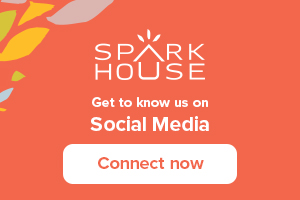Last month a neighbor alerted me about a white supremacist symbol that had been stuck to the lamppost right outside our church building. Our building sports a large rainbow flag over the main entrance and has both a rainbow flag and the words Black Lives Matter on our banner. In the second half of the week, with all of our worship plans already set and my sermon half done, I had to figure out what to do.
I knew several families were planning to be in worship, so I decided to focus our children’s time on talking about symbols and then chalk the sidewalk with affirming messages after worship the next couple of weeks. This got me thinking about how and why we teach kids, as well as adults, about different symbols, especially symbols of hate, so I came up with ways to do that.
Depending on your context, you could do this as a Sunday school lesson, in children’s time in worship, or as part of an intergenerational event. In a small congregation like ours, I was able to give the adults a heads up, so they weren’t caught off-guard. If that’s not possible, making a brief announcement at the beginning of worship or the event, or letting adults know when they drop kids off for Sunday school, helps parents prepare for any follow-up questions kids might have.
Stickers are a great way to start the conversation about symbols. I have a lot of stickers on my water bottle, but a sticker book, laptop, or sheet of stickers would also work. Together we looked at the stickers (hearts, different pride flags, stickers from my podcast, etc.) and talked about what they were for.
We talked some about the different hearts and talked a lot about the rainbows. The rainbow helped us talk about how some symbols can have more than one meaning, so we talked about God’s promise not to cause harm, the gift of difference, and God’s love for lesbian, gay, bisexual, transgender, queer, intersex, asexual and other people. Depending on age and context, you could either talk about all the words or talk about God’s love for people who love in all different ways and people who look and act in all different ways.
Then I showed the kids the crosses that I sometimes wear in worship, and we talked about what the differences mean in them. One had a rainbow and so connected to God’s love for everyone. Another was a plain wooden cross, which reminds us that pain and death aren’t the most powerful, even if they’re scary sometimes, because God loves us no matter what. The crucifix reminded us that Jesus knows what it’s like to be hurt or hated and doesn’t want that for anyone.
Then we talked about how some people use specific symbols to show that they hate other people or think they’re better than others. Depending on the context and age, you could show kids some symbols or just tell them about some. It was important for us to say that sometimes people use crosses as part of their messages of hate and that is not what the cross means.
Then we picked out a new sticker and put it on my water bottle, and after worship the kids drew affirming symbols and wrote things like “hate has no home here” and “love is strong, hate is weak” on the sidewalk. The harmful sticker was taken down and an affirming one has shown up in its place already.



